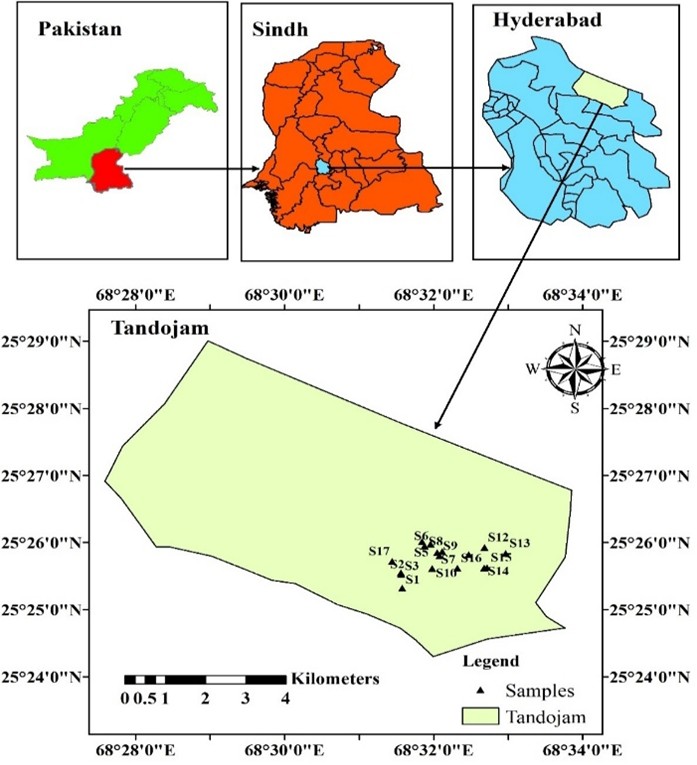Assessment of Drinking Water Quality Using WQI: A Case Study of Filtration Plants in TandoJam, Pakistan
Keywords:
Drinking Water Quality, Water Quality Index (WQI), Physico-Chemical Parameters, Microbiological ContaminationAbstract
Access to safe drinking water is a basic human right, yet it is increasingly at risk due to population growth and human activities—particularly in developing countries where monitoring and maintenance are often inadequate. This study evaluated the water quality of filtration plants in TandoJam city by analyzing 17 samples for parameters such as pH, EC, TDS, hardness, turbidity, potassium (K⁺) , sodium (Na⁺), calcium (Ca²⁺), magnesium (Mg²⁺), bicarbonates (HCO₃⁻), chloride (Cl⁻), sulphates (SO₄²-), nitrates (NO₃⁻), fluoride, arsenic, iron, chlorine, alkalinity, total coliforms, and E. coli. The Water Quality Index (WQI) was used to classify the water as excellent, good, poor, very poor, or unsuitable. Results showed that HCO₃⁻ (2 samples), Cl⁻ (1), SO₄²⁻ (1), alkalinity (4), total coliforms (17), and E. coli (17) exceeded WHO limits. WQI values ranged from 0.21 to 34.52, indicating overall excellent to good quality and suggesting the water is generally safe for drinking. However, effective treatment—including proper screening, chlorination, and regular monitoring—is essential to ensure water safety.


















